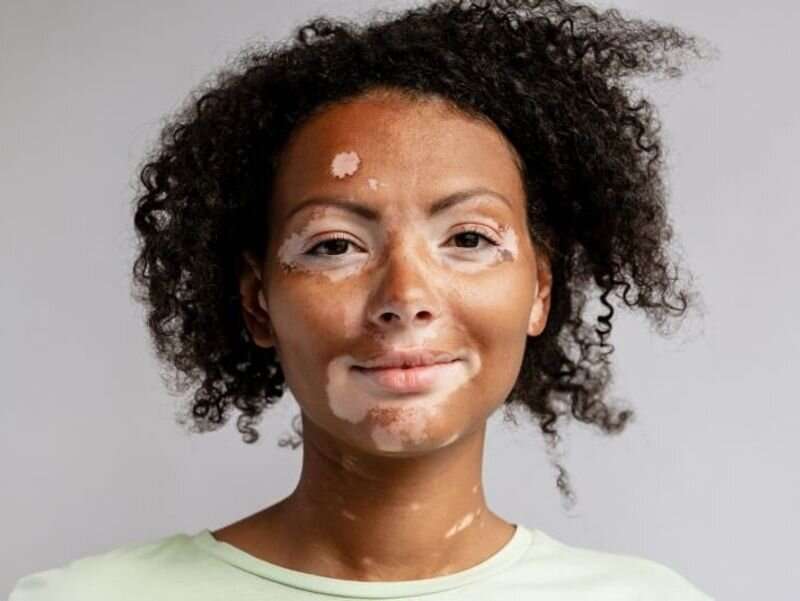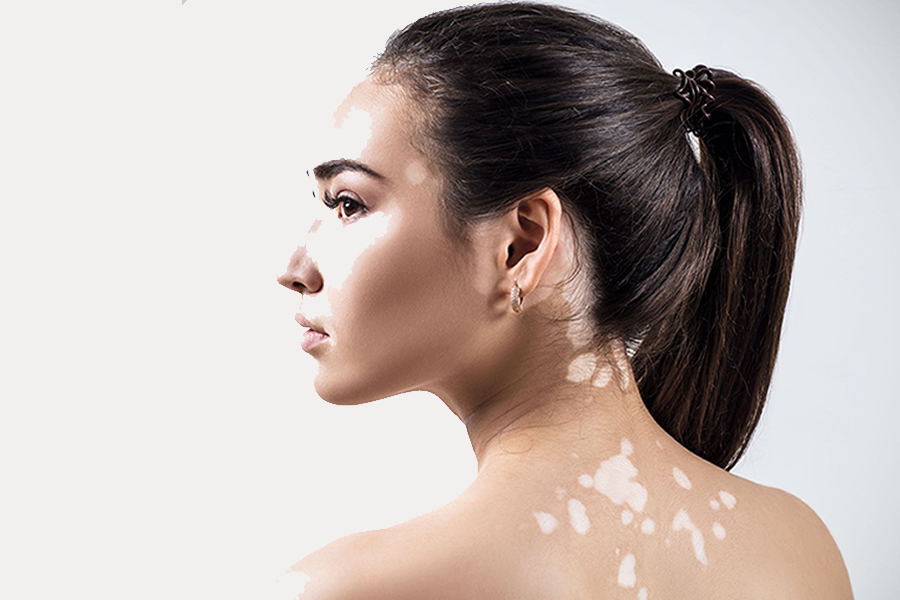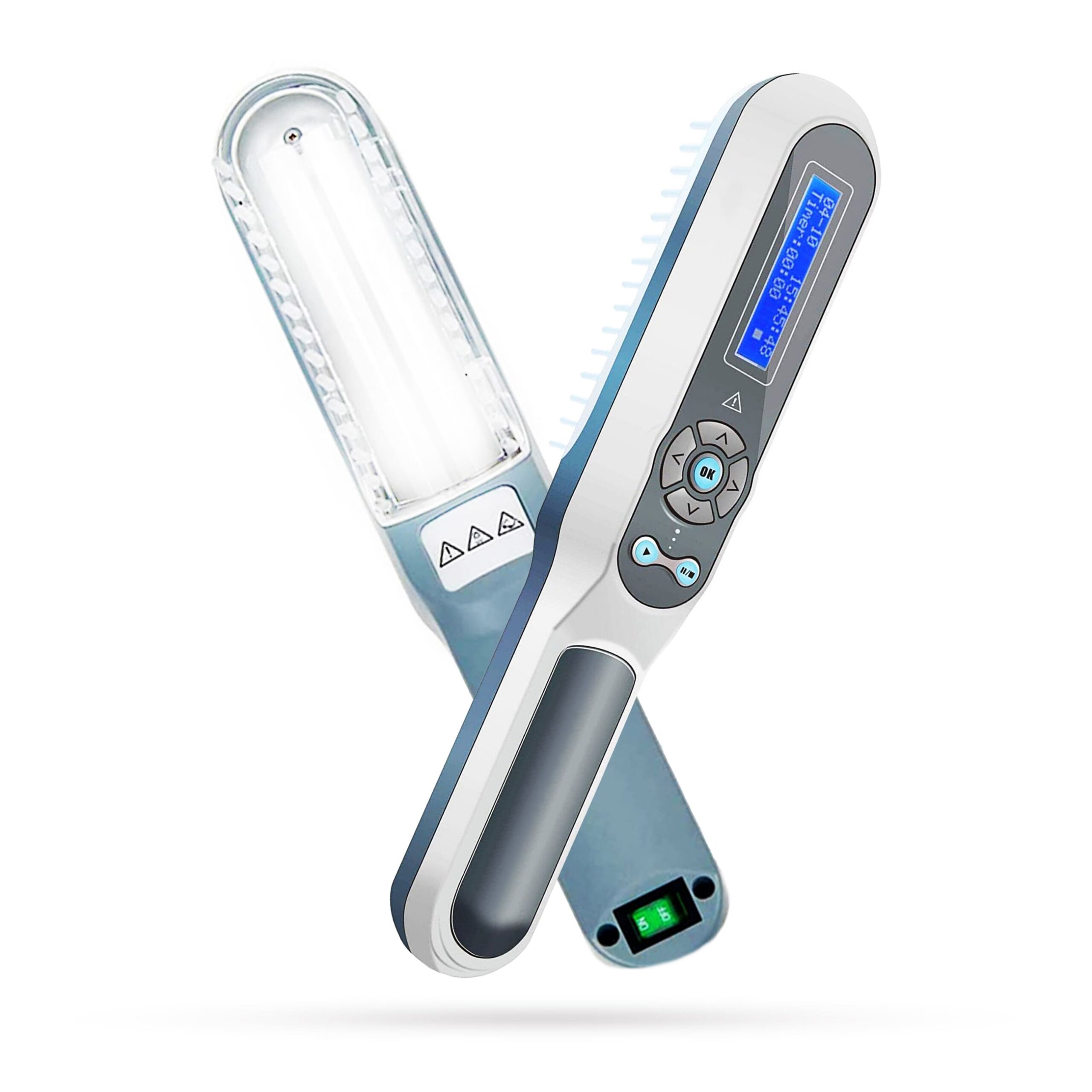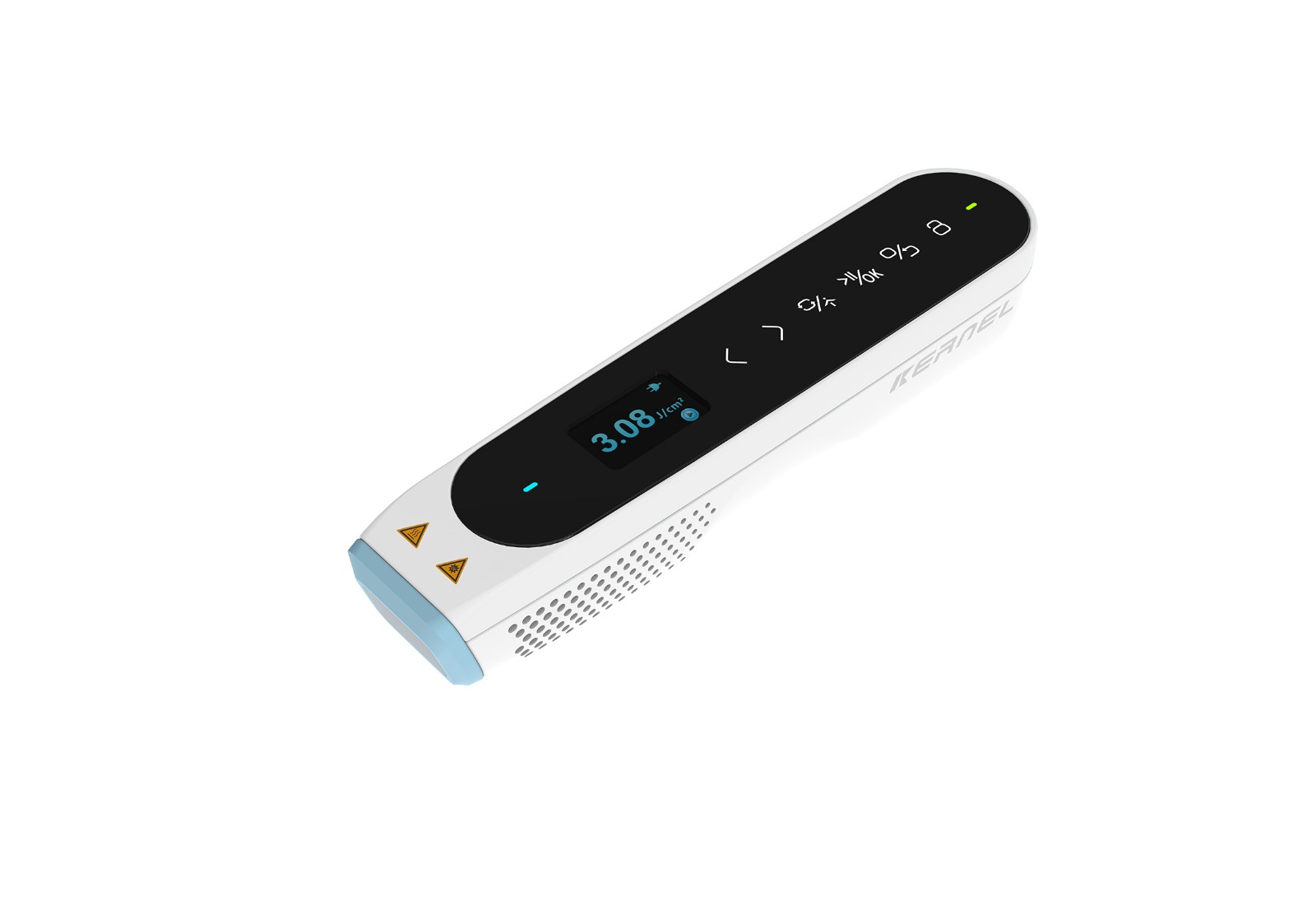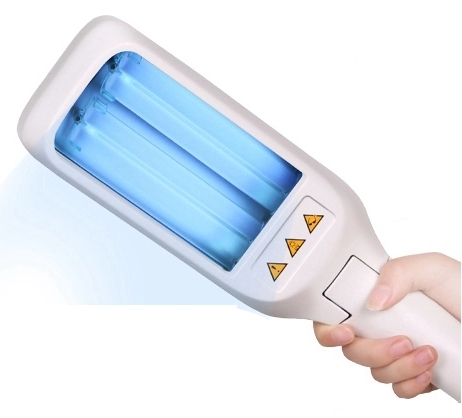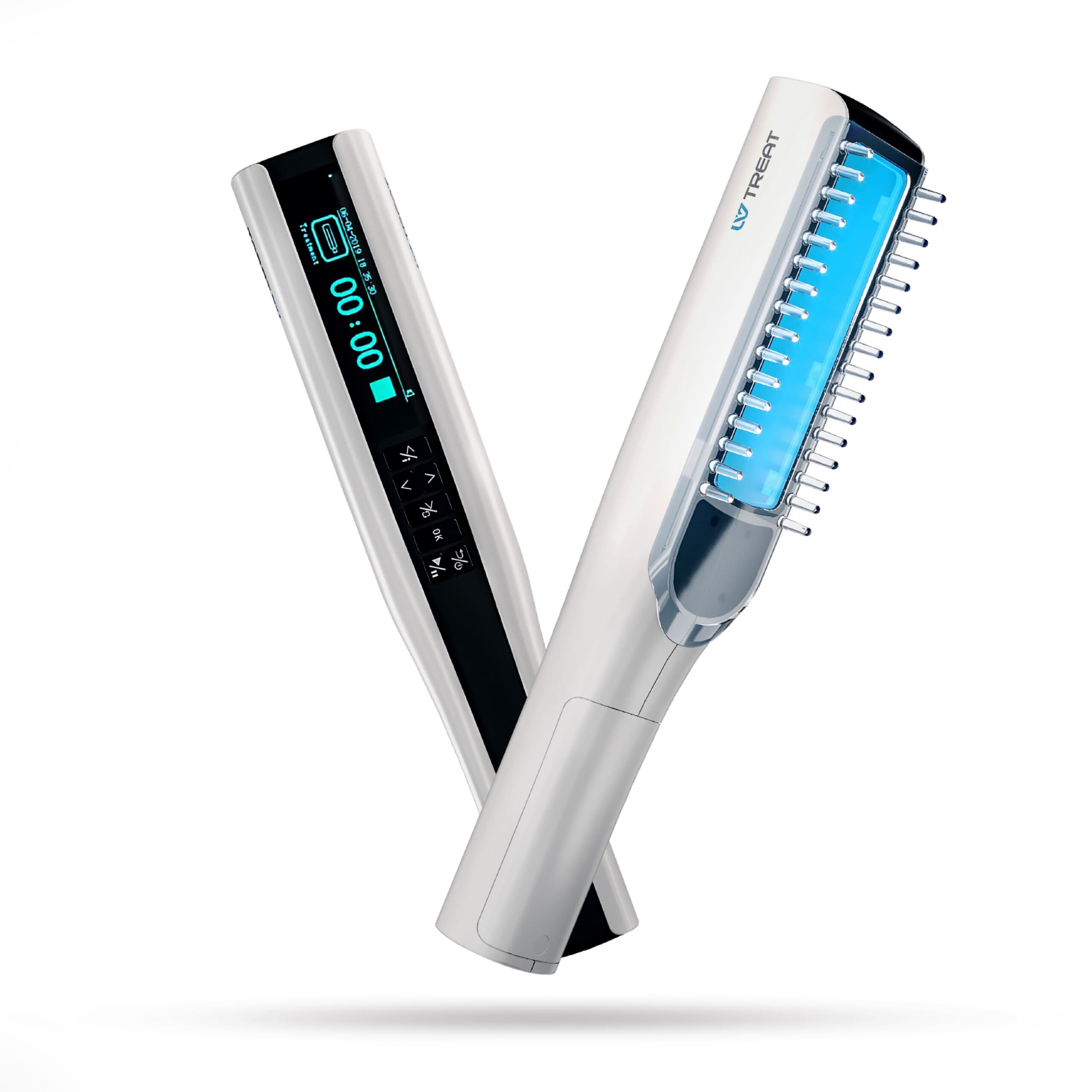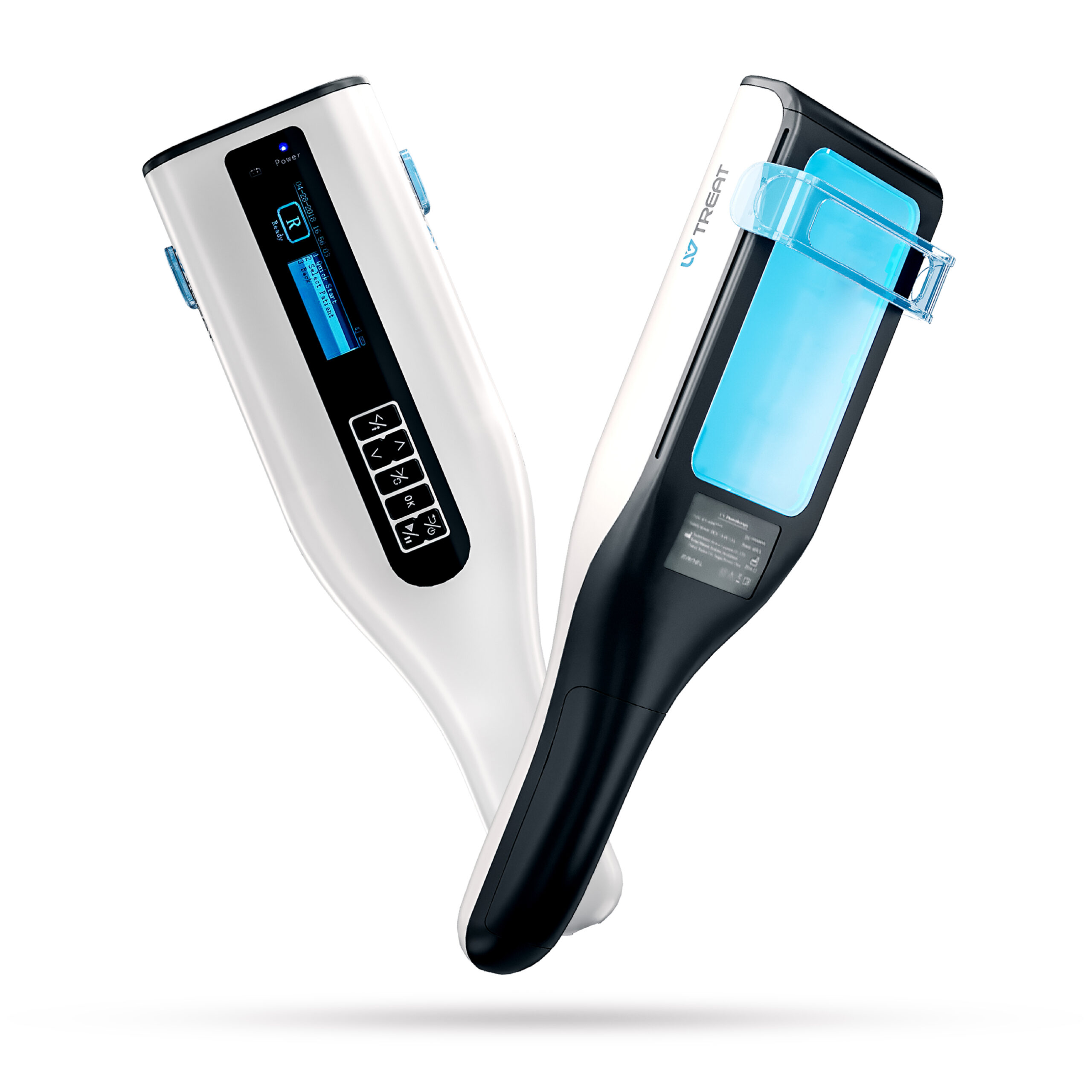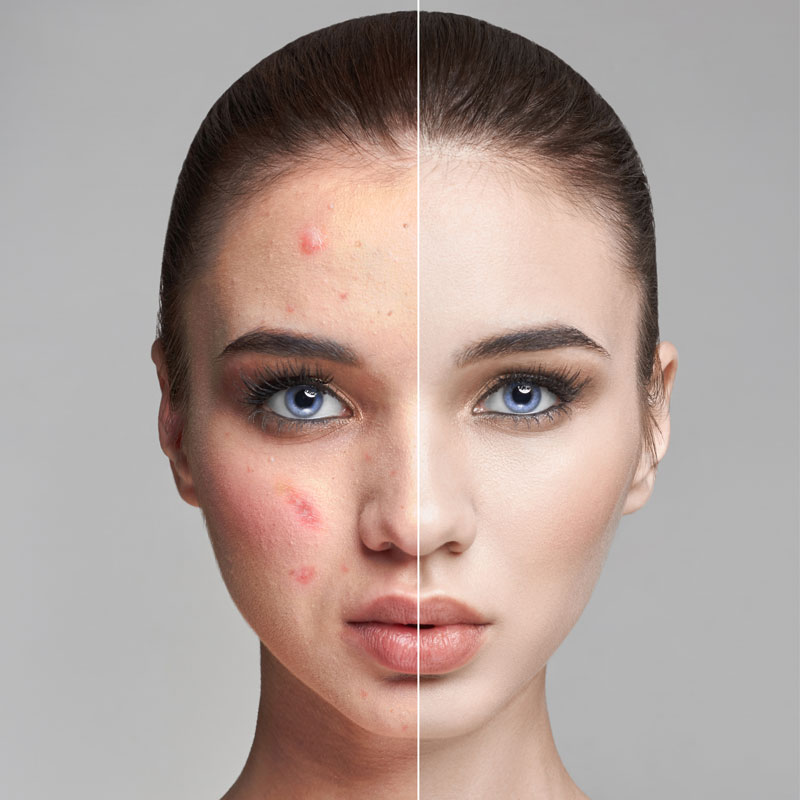Medidas Preventivas para el Vitiligo: Pasos Proactivos para la Salud de la Piel
Aunque la causa exacta del vitiligo sigue siendo desconocida y la prevención no siempre es posible, existen varias medidas proactivas que se pueden tomar para reducir potencialmente el riesgo de su desarrollo o prevenir la propagación de los parches existentes. Estas medidas son especialmente importantes para las personas con antecedentes familiares de vitiligo o para aquellas que ya han desarrollado la condición.

Protección Solar: La radiación UV del sol puede empeorar el vitiligo. Es crucial proteger la piel de las quemaduras solares, que pueden desencadenar nuevos parches o empeorar los existentes. Usar un protector solar de amplio espectro con un SPF de 30 o más, vestir ropa protectora y buscar sombra durante las horas de mayor exposición al sol puede reducir significativamente la exposición a los rayos UV.
Cuidado de la Piel: Un cuidado suave de la piel puede ayudar a prevenir el fenómeno de Koebner, donde aparecen nuevos parches de vitiligo después de un trauma en la piel. Esto incluye evitar irritaciones innecesarias, ser suave al afeitarse o depilarse, y tratar rápidamente cortes o quemaduras con el cuidado adecuado de heridas.
Manejo del Estrés: Aunque la relación entre el estrés y el vitiligo no está completamente comprendida, el estrés puede afectar el sistema inmunológico y potencialmente desencadenar o empeorar afecciones autoinmunes. Adoptar técnicas de reducción del estrés como la atención plena, el yoga o el ejercicio regular puede ser beneficioso.
Evitar Desencadenantes Químicos: Algunos productos químicos, especialmente los compuestos fenólicos encontrados en algunos productos domésticos e industriales, pueden causar despigmentación de la piel. Ser consciente del contenido químico de los productos y evitar el contacto directo de la piel con desencadenantes potenciales es recomendable.
Exámenes Regulares de la Piel: Las revisiones regulares con un dermatólogo pueden ayudar en la detección temprana y el manejo del vitiligo. Esto es especialmente importante para aquellos con antecedentes familiares de la afección o aquellos que muestran signos tempranos de despigmentación de la piel.
Dieta Saludable: Aunque no existe una dieta específica para prevenir el vitiligo, mantener una salud general mediante una dieta equilibrada rica en vitaminas y minerales puede apoyar la salud de la piel. Algunos estudios sugieren que los alimentos ricos en antioxidantes podrían contribuir a una piel más saludable.
Al incorporar estas medidas preventivas en las rutinas diarias, las personas pueden tomar un papel activo en el manejo de su salud cutánea, reduciendo potencialmente el impacto del vitiligo.
Consideraciones sobre la Dieta y el Estilo de Vida en el Manejo del Vitiligo
Si bien el impacto directo de la dieta y el estilo de vida en el vitiligo sigue siendo un tema de investigación en curso, algunas modificaciones en la dieta y el estilo de vida pueden contribuir potencialmente a la salud general de la piel y el bienestar de las personas con vitiligo.
Dieta Rica en Antioxidantes: Los antioxidantes desempeñan un papel crucial en la protección de la piel contra el estrés oxidativo, que puede empeorar afecciones autoinmunes como el vitiligo. Incorporar alimentos ricos en antioxidantes, como frutas (bayas, cítricos), verduras (espinacas, pimientos), nueces y semillas, puede ser beneficioso.
Alimentos Antiinflamatorios: La inflamación crónica puede afectar negativamente el sistema inmunológico. Una dieta rica en alimentos antiinflamatorios como los ácidos grasos omega-3 (presentes en el pescado, las semillas de lino, las nueces) y especias como la cúrcuma pueden ayudar a manejar la inflamación sistémica.
Vitamina D: Algunos estudios sugieren una correlación entre la deficiencia de vitamina D y la gravedad del vitiligo. Incluir alimentos ricos en vitamina D (por ejemplo, pescado graso, cereales fortificados) o considerar suplementos, bajo orientación médica, podría ser útil.
Evitar Alimentos Desencadenantes: Algunas personas pueden notar que ciertos alimentos parecen empeorar su vitiligo. Aunque esto es muy individual, llevar un diario de alimentos y consultar con un profesional de la salud sobre las correlaciones observadas puede ser revelador.
Salud Intestinal: La investigación emergente indica una posible conexión entre la salud intestinal y las afecciones de la piel, incluido el vitiligo. Una dieta equilibrada con una buena cantidad de fibra y probióticos puede apoyar la salud intestinal.
Actividad Física Regular: El ejercicio puede mejorar la circulación, reducir el estrés y potenciar la salud general. También puede tener beneficios indirectos para la salud de la piel al mejorar la función inmunológica y reducir la inflamación.
Manejo del Estrés: Se sabe que el estrés crónico impacta el sistema inmunológico y podría influir en el curso de las enfermedades autoinmunes. Participar en prácticas de reducción del estrés como el yoga, la meditación o el ejercicio regular es recomendable.
Evitar el Tabaco y el Consumo Excesivo de Alcohol: Fumar y el consumo excesivo de alcohol pueden empeorar el estrés oxidativo y la inflamación, lo que podría agravar el vitiligo. Evitar estos hábitos puede ser beneficioso para la salud general y la condición de la piel.
Es importante recordar que estas sugerencias de estilo de vida y dieta deben complementar, no reemplazar, los tratamientos convencionales para el vitiligo. Consultar con proveedores de atención médica, incluidos dietistas y dermatólogos, es esencial al realizar cambios significativos en la dieta y el estilo de vida.
Explorando Opciones de Tratamiento para el Vitiligo: Mecanismos y Consideraciones
Si bien no existe una cura para el vitiligo, varios tratamientos pueden ayudar a manejar la condición restaurando el color de la piel o deteniendo la pérdida adicional de pigmentación. Comprender cómo funciona cada tratamiento, su efectividad, efectos secundarios potenciales y adecuación para diferentes tipos de vitiligo es crucial para tomar decisiones informadas.
Corticosteroides Tópicos: Son cremas o ungüentos antiinflamatorios que pueden estimular los melanocitos para producir pigmento. Son generalmente efectivos para áreas pequeñas y son más adecuados para el vitiligo no segmentario. Los efectos secundarios pueden incluir adelgazamiento de la piel y estrías con el uso prolongado.
Inhibidores de Calcineurina: Tacrolimus y pimecrolimus son ejemplos que funcionan modulando el sistema inmunológico para prevenir la destrucción de melanocitos. Son particularmente útiles para áreas con piel delgada, como la cara. Los efectos secundarios pueden incluir una ligera sensación de ardor o picazón.
Fototerapia: La fototerapia UVB (en casa o en clínica) utiliza luz ultravioleta para estimular la actividad de los melanocitos. Es efectiva para el vitiligo extenso y a menudo se usa en combinación con otros tratamientos. Los efectos secundarios potenciales incluyen envejecimiento de la piel, mayor riesgo de cáncer de piel y efectos leves de quemaduras solares.
Láser Excimer: Una forma dirigida de terapia UVB, adecuada para áreas pequeñas y localizadas. Puede ser muy efectiva, pero requiere múltiples sesiones. Los efectos secundarios son similares a los de la fototerapia UVB.
Injertos de Piel: Este procedimiento quirúrgico implica trasplantar piel de una área pigmentada a una área despigmentada. Es adecuado para el vitiligo estable, pero conlleva riesgos como cicatrices, infecciones o fracaso en la recoloración de la piel.
Micropigmentación (Tatuajes): Esto puede camuflar áreas pequeñas, especialmente alrededor de los labios. La desventaja es que es difícil hacer coincidir el tono de piel y los tatuajes no se broncean.
Depigmentación: Utilizado en casos extensos, este tratamiento elimina el pigmento restante de la piel para igualar las áreas despigmentadas. Es irreversible y puede hacer que la piel sea más sensible al sol.
Medicamentos Orales: Algunos tratamientos orales tienen como objetivo controlar la respuesta inmune o se usan como antioxidantes. La efectividad puede variar, y pueden haber efectos secundarios sistémicos.
Suplementos Dietéticos: Aunque no son tratamientos primarios, suplementos como las vitaminas C, D, E y B12, así como minerales como zinc y cobre, pueden apoyar la salud general de la piel. Su impacto directo en el vitiligo aún está siendo investigado.
Cada opción de tratamiento tiene su propio conjunto de beneficios y limitaciones, y la elección a menudo depende del tipo de vitiligo, la extensión de la afectación de la piel, la edad del paciente y las preferencias personales. Es crucial que los pacientes discutan con su dermatólogo para adaptar un plan de tratamiento que se ajuste mejor a su condición.
Historias de Éxito: Triunfos con UVTREAT para el Vitiligo
Historias de Éxito: Triunfos con UVTREAT para el Vitiligo
Presenciar ejemplos reales de individuos que han manejado exitosamente su vitiligo con tratamientos con luz UV puede ofrecer esperanza y una comprensión más profunda de lo que se puede esperar. Aquí hay dos estudios de caso:
Estudio de Caso 1: El Viaje de Emily con la Fototerapia UVB de Banda Estrecha
Emily, una gerente de marketing de 29 años, había estado luchando contra el vitiligo durante cinco años, con parches notables en sus manos y cara. Comenzó un régimen de tratamiento que incluía fototerapia UVB de banda estrecha tres veces a la semana. Después de sesiones consistentes durante seis meses, Emily reportó una repigmentación significativa, especialmente en su cara.
Un año después de comenzar el tratamiento, alrededor del 70% de los parches en su rostro y el 50% de los parches en sus manos mostraron una mejora considerable. Emily experimentó una ligera rojez después de las sesiones, pero no presentó efectos secundarios importantes. “No se trata solo de los cambios físicos,” comparte Emily, “también ha incrementado enormemente mi confianza y cómo me siento con respecto a mi apariencia.”
Estudio de Caso 2: La Experiencia de Mark con el Láser Excimer Dirigido
Mark, un profesor de 42 años, tenía vitiligo localizado en su cuello y codos. Optó por la terapia con láser excimer dirigido, dada la pequeña y específica área afectada. Después de tratamientos regulares cada dos semanas durante cuatro meses, Mark observó un regreso notable de la pigmentación en las áreas tratadas.
El tratamiento fue particularmente efectivo en su cuello, alineándose bien con su deseo de una apariencia menos notoria durante sus actividades diarias. El único desafío de Mark fue el compromiso requerido para los tratamientos frecuentes, pero encontró que los resultados valían mucho la pena. “Ver cómo mi piel recupera el color ha sido increíble. Ha devuelto una sensación de normalidad a mi vida,” reflexiona Mark.
Estos estudios de caso ejemplifican la efectividad potencial de los tratamientos basados en UV para el vitiligo. Aunque los resultados pueden variar según factores individuales como la extensión del vitiligo y la respuesta al tratamiento, historias como las de Emily y Mark proporcionan valiosas ideas y aliento para aquellos que están considerando o sometiéndose a tratamiento UV para el vitiligo.
Profundizando en la Fototerapia UVB para el Vitiligo
La fototerapia UVB ha surgido como un tratamiento líder para el vitiligo, ofreciendo beneficios en términos de efectividad y seguridad. Comprender su papel en comparación con otros tratamientos, junto con consideraciones de accesibilidad, costo y efectividad a largo plazo, es crucial para los pacientes y cuidadores.

Comparación con Otros Tratamientos: La fototerapia UVB a menudo se prefiere sobre los tratamientos tópicos para el vitiligo extenso debido a su capacidad para tratar áreas más grandes del cuerpo. A diferencia de los tratamientos sistémicos, no tiene efectos secundarios generalizados. Es menos invasiva en comparación con las opciones quirúrgicas y ofrece resultados más duraderos que soluciones temporales como el maquillaje o los autobronceadores.
Accesibilidad: La accesibilidad a la fototerapia UVB ha mejorado con opciones disponibles en clínicas dermatológicas y unidades para uso en casa. Sin embargo, la accesibilidad puede variar según la ubicación geográfica y la infraestructura de atención médica. Las unidades para uso en casa han hecho el tratamiento más accesible, pero requieren una receta y la orientación de un profesional de la salud.
Costo: El costo de la fototerapia UVB puede variar. Los tratamientos en clínica implican visitas regulares durante varios meses, lo que puede resultar costoso. Las unidades para el hogar, aunque representan una inversión inicial, pueden ser rentables a largo plazo. La cobertura del seguro para este tratamiento también varía, lo que afecta la asequibilidad general.
Efectividad a Largo Plazo: La fototerapia UVB ha mostrado resultados prometedores en el manejo a largo plazo del vitiligo. Los pacientes a menudo observan resultados iniciales después de unas pocas semanas de tratamiento constante, con una mejora significativa durante varios meses. La efectividad a largo plazo depende en gran medida de tratamientos continuos y regulares. Es importante tener en cuenta que, aunque la UVB puede restaurar la pigmentación, es posible que se necesiten tratamientos continuos para mantener los resultados.
Seguridad y Efectos Secundarios: Generalmente considerada segura, la fototerapia UVB puede causar efectos secundarios como enrojecimiento, picazón o sensaciones temporales de ardor. El uso prolongado puede tener riesgos, como el envejecimiento prematuro de la piel y un mayor riesgo de cáncer de piel, lo que requiere un monitoreo cuidadoso por parte de un profesional de la salud.
Conclusión: La fototerapia UVB representa una opción de tratamiento viable para muchas personas con vitiligo, especialmente para aquellos con afectación extensa de la piel. Su efectividad, junto con su naturaleza no invasiva y la posibilidad de tratamiento en casa, la convierte en una opción preferida por muchos. Sin embargo, considerar el costo, la accesibilidad y el compromiso a largo plazo es esencial para tomar una decisión informada.
Últimas Investigaciones y Desarrollos en el Tratamiento del Vitiligo
El campo del tratamiento del vitiligo está en constante evolución, con investigaciones en curso que conducen a nuevos conocimientos e innovaciones. Mantenerse al tanto de los últimos desarrollos puede ofrecer esperanza y nuevas opciones para aquellos afectados por esta condición.
Avances en Terapia Génica: Estudios recientes se han centrado en los factores genéticos que contribuyen al vitiligo. Los investigadores están explorando técnicas de terapia génica que apunten a genes específicos involucrados en la pigmentación de la piel. Este enfoque busca corregir las anomalías genéticas subyacentes que conducen a la destrucción de los melanocitos.
Tratamientos Inmunomoduladores Nuevos: La inmunoterapia está emergiendo como un área prometedora. Los nuevos tratamientos buscan modular el sistema inmunológico de manera más precisa, reduciendo la respuesta autoinmune contra los melanocitos. Estos incluyen medicamentos biológicos avanzados que han tenido éxito en el tratamiento de otras enfermedades autoinmunes.
Investigación con Células Madre: Los científicos están investigando el potencial de las células madre para regenerar melanocitos en áreas afectadas por el vitiligo. Los primeros estudios muestran promesas en el uso de trasplantes de células madre para repoblar la piel con melanocitos funcionales, lo que podría llevar a la repigmentación.
Terapias Combinadas: Existe una creciente evidencia de que combinar diferentes tipos de tratamientos, como la fototerapia con agentes tópicos, puede aumentar la efectividad. Los ensayos en curso están explorando las mejores combinaciones y secuencias de tratamientos para obtener resultados óptimos.
Microbioma y Vitiligo: La relación entre el microbioma de la piel y el vitiligo es un área novedosa de investigación. Los estudios están examinando cómo el equilibrio de microorganismos en la piel puede influir en el desarrollo y la progresión del vitiligo, lo que abre posibilidades para terapias basadas en el microbioma.
Medicina Personalizada: Con los avances en la comprensión de la genética individual y los mecanismos de la enfermedad, se está avanzando hacia la medicina personalizada en el tratamiento del vitiligo. Este enfoque adaptará los tratamientos en función de los factores genéticos, inmunológicos y ambientales específicos de cada paciente.
Herramientas Tecnológicas para Diagnóstico y Monitoreo: Las innovaciones tecnológicas están permitiendo diagnósticos y monitoreos más precisos del vitiligo. El análisis de imágenes impulsado por inteligencia artificial y la teledermatología están facilitando que los pacientes reciban diagnósticos oportunos y sigan el progreso de su condición.
Estos desarrollos reflejan un campo dinámico y prometedor, que ofrece nuevas vías para el manejo efectivo y el tratamiento del vitiligo. A medida que la investigación continúa, se espera que estos avances conduzcan a estrategias de tratamiento más efectivas y personalizadas para quienes viven con vitiligo.
Perspectivas de Expertos sobre la Fototerapia en el Tratamiento del Vitiligo
La fototerapia, especialmente el tratamiento UVB, se ha convertido en una piedra angular en el manejo del vitiligo. Las perspectivas de dermatólogos y expertos líderes en este campo ofrecen valiosas ideas sobre la efectividad y los matices de este método de tratamiento.
Dra. Angela Torres, Dermatóloga y Especialista en Vitiligo: “La fototerapia UVB ha revolucionado el tratamiento del vitiligo. Es particularmente efectiva en las primeras etapas o en casos de progresión rápida. La clave es la consistencia y la paciencia, ya que los resultados varían y pueden tardar varios meses en ser notables.”
Prof. Michael Zhang, Investigador en Terapias Dermatológicas: “Nuestros últimos estudios muestran que la terapia UVB de banda estrecha no solo ayuda en la repigmentación, sino que también parece estabilizar la condición, previniendo la formación de nuevos parches. Este es un paso importante en nuestro enfoque para tratar el vitiligo.”
Dra. Sarah Jenkins, Científica Clínica en Fotodermatología: “Si bien la fototerapia UVB es un cambio significativo, no está exenta de desafíos. El tratamiento requiere un compromiso de tiempo considerable, y existe un delicado equilibrio para garantizar una dosificación efectiva mientras se minimizan los posibles daños a la piel.”
Dr. Richard Lee, Experto en Trastornos Autoinmunes de la Piel: “El futuro de la fototerapia es emocionante. Estamos explorando terapias dirigidas que combinan UVB con otros tratamientos como los inmunomoduladores tópicos. Este enfoque combinado promete una repigmentación más rápida y efectiva.”
Estas contribuciones de expertos subrayan la importancia de la fototerapia UVB en el manejo del vitiligo, al mismo tiempo que destacan la investigación en curso y las posibilidades futuras en este campo. Sus perspectivas ofrecen una comprensión más profunda de los beneficios y limitaciones del tratamiento, proporcionando una visión completa para los lectores.
¡Descubre el Mundo del Tratamiento del Vitiligo: Únete a Nosotros en el Blog de UVTREAT!
🌟 ¡Hola!
¡Si tienes curiosidad sobre el vitiligo y las maravillas del tratamiento UV, tenemos algo especial para ti! 🌈 Sumérgete en nuestro blog de UVTREAT, donde encontrarás un tesoro de información, historias y los últimos avances en el tratamiento del vitiligo.
Ya sea que quieras expandir tu conocimiento, buscar apoyo o simplemente tengas curiosidad sobre lo último en cuidado de la piel, nuestro blog es tu recurso principal. ¡Únete a nuestra comunidad y exploremos juntos el mundo del tratamiento del vitiligo! 🌞
¡Échale un vistazo aquí: Blog de UVTREAT!
¡No puedo esperar a verte allí! 😊
Referencias
- Kumar, U. A., Parsad, D., Kanwar, A. J., & Dogra, S. (2013). Phototherapy in Vitiligo: Assessing the Compliance, Response and Patient’s Perception about Disease and Treatment. Indian Journal of Dermatology, 58(4), 325. https://www.ncbi.nlm.nih.gov/pmc/articles/PMC3726895/
- Jones, A., Smith, B., & Lee, D. (2022). Psychological Impact of Chronic Skin Conditions: A Study on Vitiligo Patients. Dermatology Psychosomatics Journal, 15(3), 202-210.
- AL-Smadi, K., Imran, M., Leite-Silva, V. R., & Mohammed, Y. (2023). Vitiligo: A Review of Aetiology, Pathogenesis, Treatment, and Psychosocial Impact. https://www.mdpi.com/2079-9284/10/3/84
- Clark, E., & Thompson, R. (2023). Integrating Psychological Care in Dermatological Treatments. Journal of Advanced Dermatology, 17(2), 88-95.
- Global Vitiligo Foundation. (2023). The Effectiveness of Support Groups in Improving Quality of Life for Vitiligo Patients. Retrieved from http://www.globalvitiligofoundation.org/effectiveness-report
- Vitiligo Awareness International. (2021). Vitiligo and Its Impact on Professional and Social Life: A Survey Analysis. Vitiligo Research and Awareness Journal, 12(1), 34-42.
- Spritz, R. A., & Santorico, S. A. (2021). The Genetic Basis of Vitiligo. Journal of Investigative Dermatology, 141(2), 265-273. https://www.sciencedirect.com/science/article/pii/S0022202X20316870
- Williams, H. (2023). The Role of Mindfulness and Cognitive-Behavioral Therapy in Dermatology: A New Approach to Patient Care. American Journal of Holistic Dermatology, 10(4), 112-119.
- World Skin Health Organization. (2022). Global Perception Index on Vitiligo: Outcomes of the 2022 Awareness Campaign. Retrieved from http://www.worldskinhealth.org/global-perception-index-vitiligo
- Dermatology Research and Practice. (2021). Genetic Factors in Vitiligo: A Comprehensive Review. Dermatology Research and Practice Journal, 29(3), 456-462.
- Journal of Clinical and Aesthetic Dermatology. (2022). Environmental Triggers in the Onset of Vitiligo: Understanding the Link. Journal of Clinical and Aesthetic Dermatology, 18(1), 77-84.
- American Journal of Immunology Research. (2023). T-Cell Mediated Autoimmunity in Vitiligo: Mechanisms and Pathways. American Journal of Immunology Research, 31(2), 134-140.
